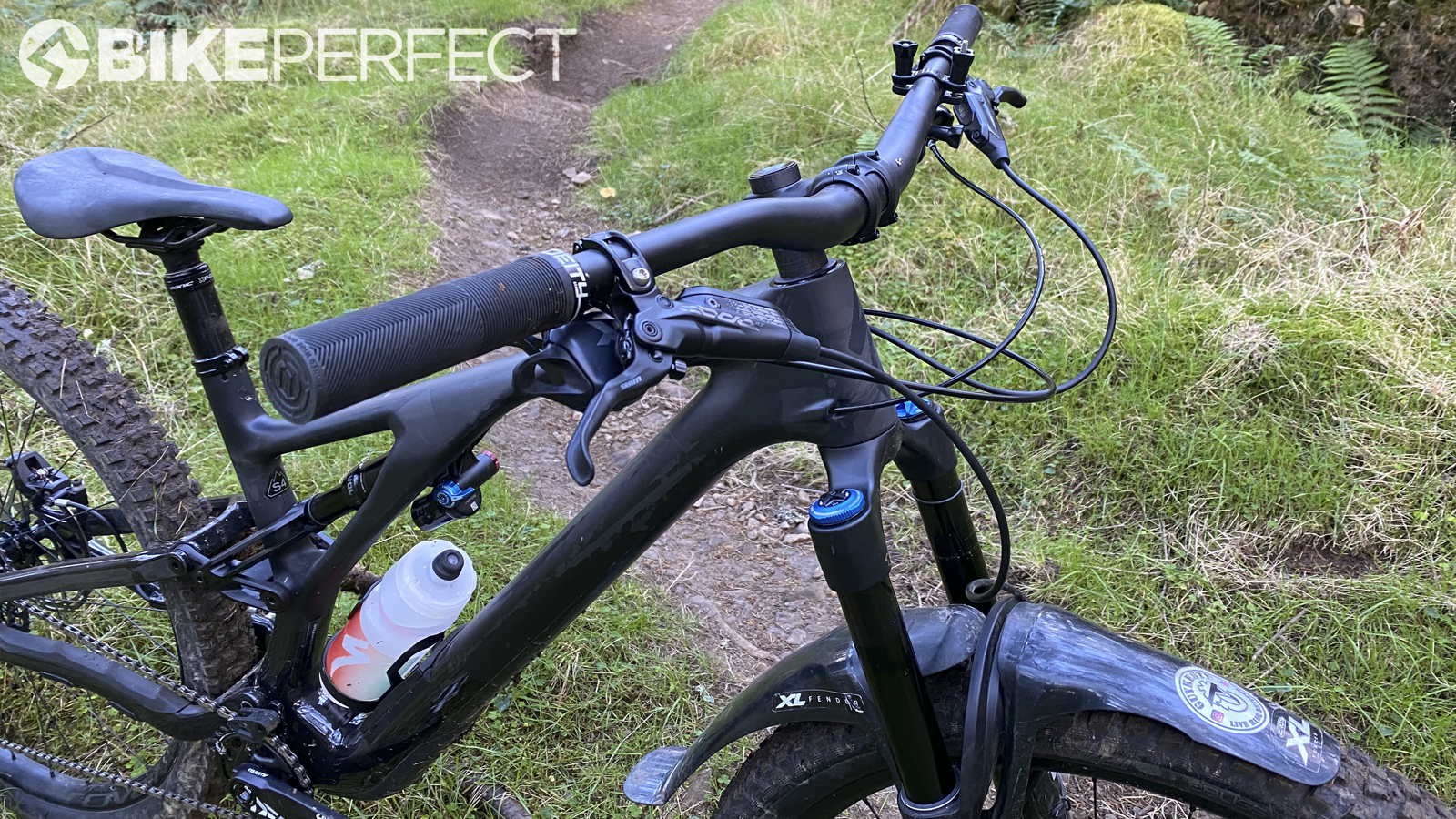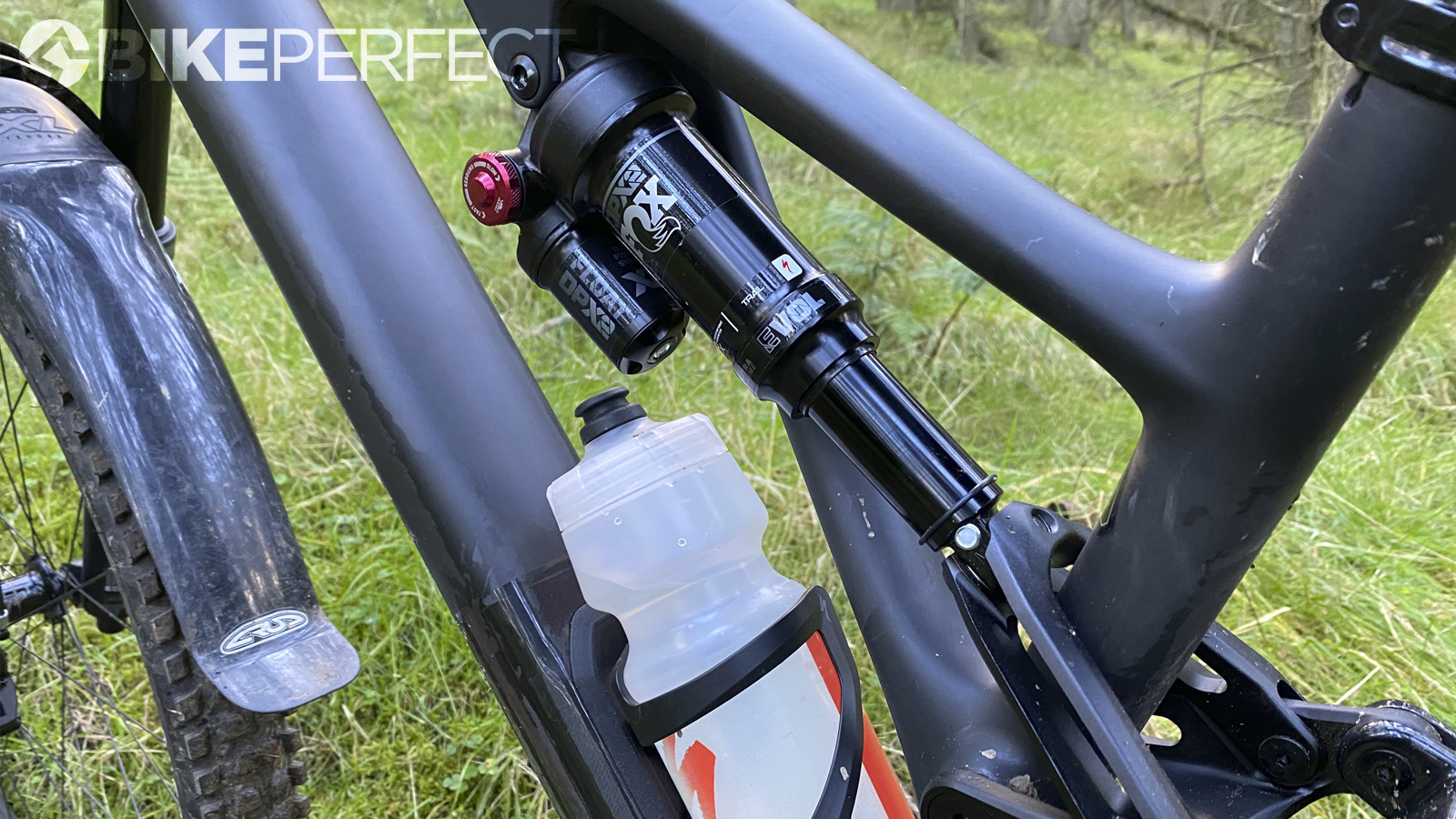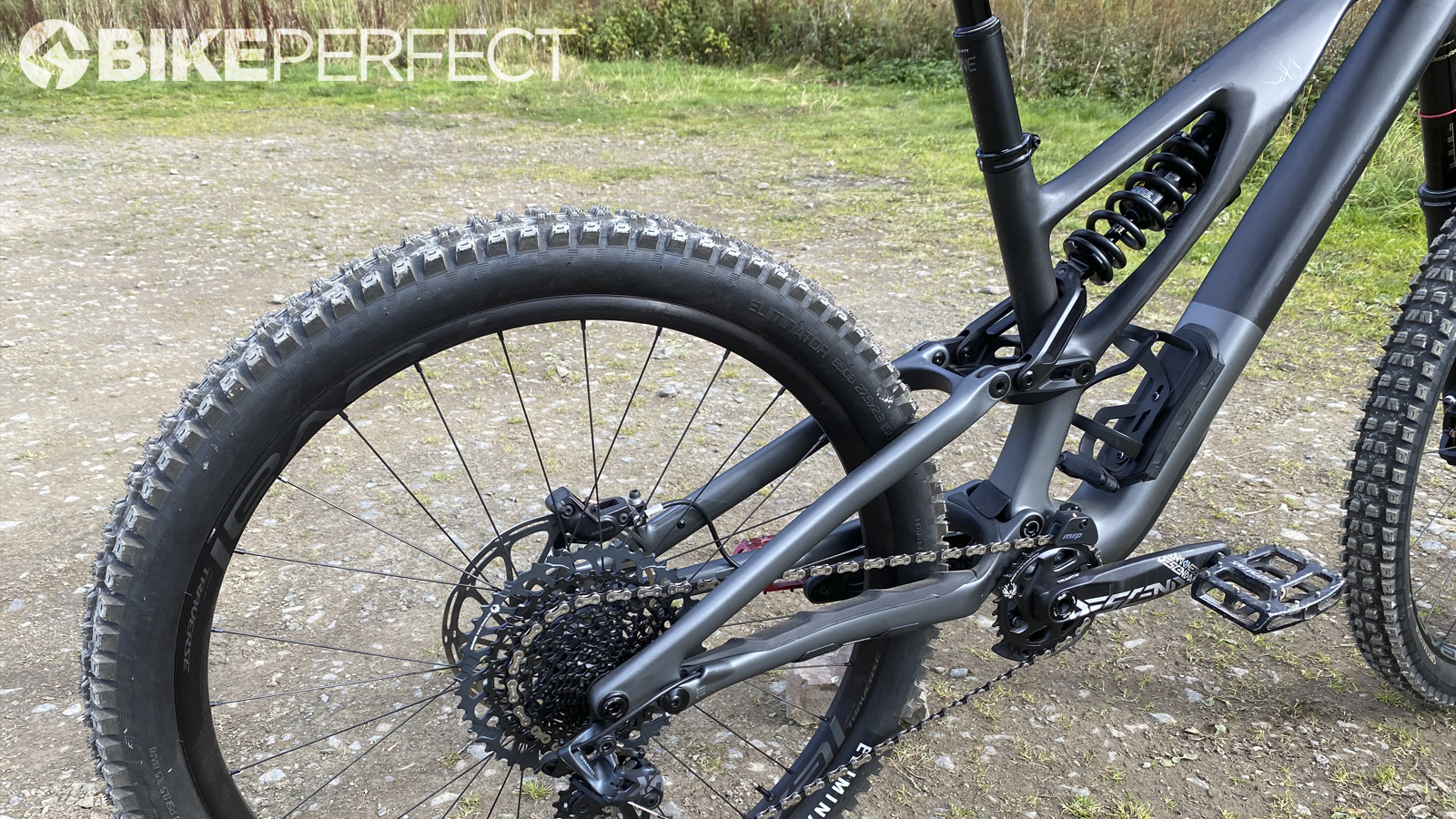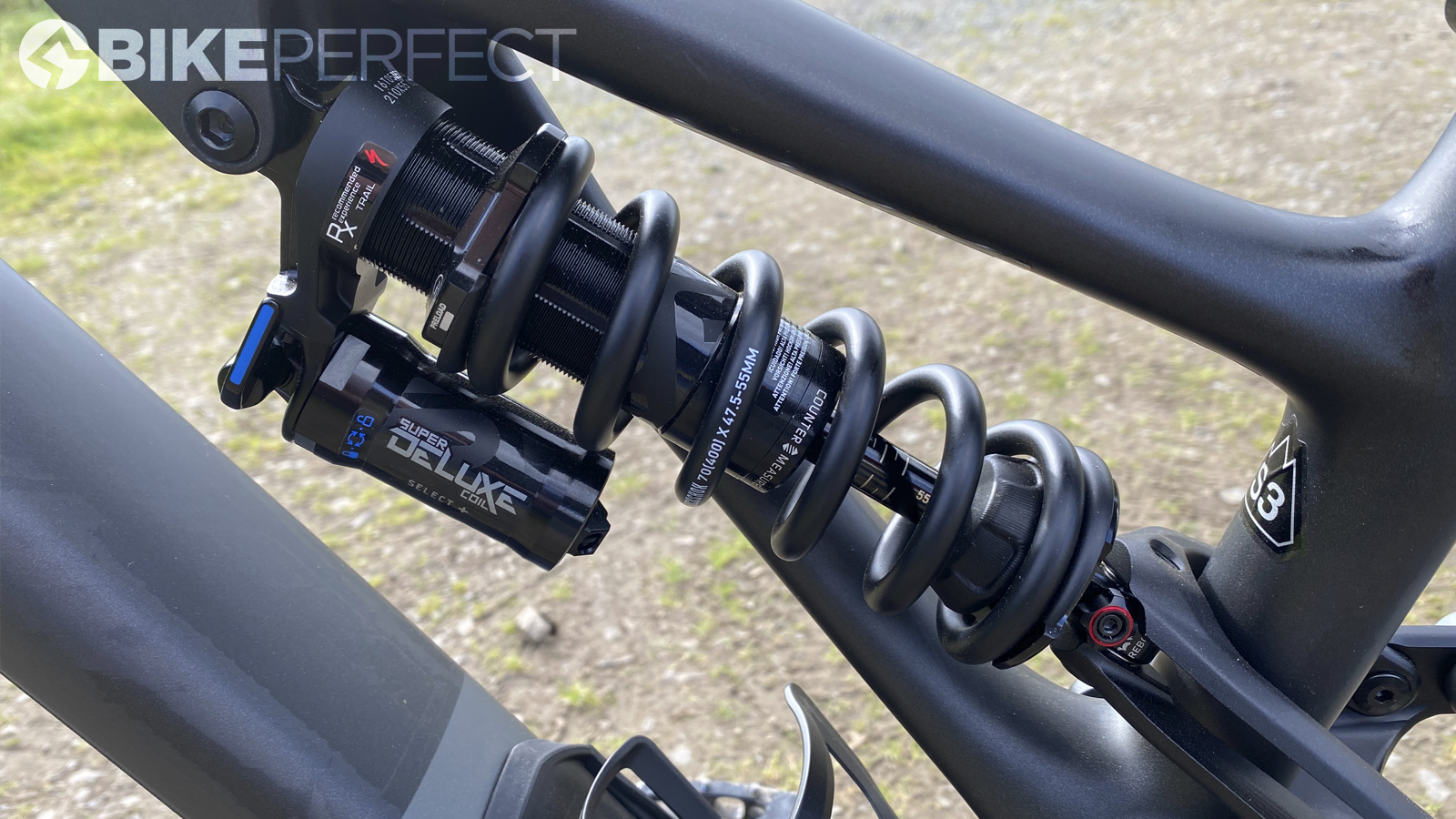Bike Perfect Verdict
A user-friendly trail rig that can be ridden fast and furiously, regardless of your skillset
Pros
- +
Rad-to-mad geo and shock adjustment
- +
Excellent suspension control
- +
On-point frame feel
- +
Decent weight
- +
SWAT
- +
Practical, protective details
- +
Sorted kit package
- +
Full size range
Cons
- -
Power phase is soft in open mode
- -
S-Works frame is a lot more cash for just a 35g weight saving
- -
Tires are dry biased
- -
Shorter stem please
Why trust BikePerfect
It’s over 39 years since the first Specialized Stumpjumper appeared and the radical Evo version was a massive hit when it was introduced in the last model change. The latest version is a more adjustable evolution of its ultra-progressive character with a full model range from basic to bling. Initial rides suggest it’s a total pinner that’s still a remarkably user-friendly daily driver, too.



Design and geometry
Given the rave reviews about the suspension performance and pedalling abilities of the Enduro, we were thinking - and hoping - that Specialized might have switched to a low shock layout for the new Stumpjumper. In the interests of keeping weight ‘easy climbing’ low, it has stayed with the previous offset ‘Sidearm’ strut, top tube anchored shock layout. They’ve also shaved a small amount of weight in the process so the S-Works version with carbon linkage (all frames are the same 11m carbon otherwise) comes in at 2,750g for a medium frame with all the bits on.
There are big differences though. For a start, while previous Evo only came in a couple of sizes there is now a full-sized range based on Specialized’s new S1-S6 rather than normal XS-XL labelling. Be aware that the new S3/S4 models match the previous S2/S3 sizes so it’s not a direct translation. It’s also available in alloy (one model) and carbon (four models) right from the bat.
The bat is also slightly reshaped. While sizes aren’t directly comparable reach actually comes back in a few mm, but we still measured our S4 sample at over 480mm (Specialized say 475mm). The bottom bracket also lifts slightly to 331mm (S4 measured, S1 is lower) from a minimum low of 328mm below. The fun really starts with the amount of adjustment Specialized has built into the new Evo. The ride height chip is moved from the rear shock to the chainstay which changes BB height by 7mm and angles by 0.5 degrees. However, the Evo now comes with three different headset cup inserts (Steep, Middle, Slack) that change the head angle by 2 degrees. Combined with the rear chip that gives a range from 65.5 in Steep/High to 63 in Slack/Low. Specialized has also kept seat tube lengths super short (430mm on an S4, and dropper posts long for maximum ‘size by length not height’ potential.
- Best trail bike: the best trail mountain bikes reviewed and rated
- Best enduro mountain bike: carbon and alloy enduro mountain bikes for all skill sets
- Best mountain bike tires: all the top mountain bike tires reviewed
Specialized’s ‘Rider-First Engineered’ process gives each frame size a different carbon layup to reflect likely loads and seat angles also steepen up from 78.2- to 76.2-degrees depending on size and geometry configuration. The two largest sizes also get a proportionately larger (448 rather than 438mm long) rear end.
Comparison geeks will note that’s 5mm shorter than previous Evo. There’s still masses of mudroom around a 2.3in tyre though and the travel now goes up to 150mm (from 140mm). The capacity of Specialized’s ultra-useful SWAT down tube storage system goes up by 15 per cent too and the custom stowage bags now include a 22oz (650ml) water bladder as well as the bottle cage on the SWAT door itself. Further user-friendliness comes from chunky top and bottom rubber chain stay protection, a protective belly pan, threaded bottom bracket. There’s even a little skirt over the gap between swingers and mainframe to stop rocks getting trapped and log splitting your frame.
While the carbon S-Works link saves 35g the CNC-machined linkage on the lower models are still seriously pretty alloy sculpting. You even get increasingly rare ISCG mounts with a top chain guide block on the Comp and Expert models and a full MRP guide with ring guard on the Pro and S-Works.
Components and build
In terms of the other kit, we tested the Expert model which comes with a cost-conscious but full performance mix of 160mm travel, short offset Fox 36 Performance Elite fork with Grip 2 damper for high and low-speed compression and rebound adjust.
The DPX2 rear shock gets the new high flow base valve alongside two-stage low-speed compression adjustment and wide range rebound damping. It comes stock with the medium 0.6in volume spacer to make it easy to take progression either way too.
SRAM X01 gears are toughened up with a Truvativ Descendant alloy crank, which is a very wise move on such a slammed bike. Code RS brakes with 200mm rotors front and rear do the stopping, a long stroke X-Fusion Manic dropper post does the dropping and 30mm internal Roval alloy rims stop the tires from popping. Because of an awkward embargo overlap, we can’t tell you about the front tyre until next week though.
Specialized takes care of the 800mm bar, 55mm stem steering and remote dropper lever business and you get the excellent shorter, broader Bridge saddle. Single collar Deity grips are a really nice contact point upgrade too.



Ride, handling and performance
Specialized’s launch literature is all about tuning the Evo to be the ‘Ultimate Trail Bike’. That translates into aiming it right into the centre of the stiffness/control/tactile/accurate frame feel Venn diagram and similarly centred in terms of suspension. We’d totally agree that they’ve got that sweet-singletrack-dreams-Goldilocks point nailed, too.
The fact the frame will carry all your water, tools, snacks hidden inside immediately makes it ‘the one who turns up on a ride who everyone relies on to get them home if they forgot their sh*t’. The predictably progressive rear shock kinematic gives a very broad acceptable setup. The Grip 2 damper finally sits in a space where leaving the dials mid-range doesn’t explode your wrists but you sucky soft or hench or supportive with a split second twist. While it doesn’t give you an extra gear of grunt from boosted anti-squat when you kick hard, the classic FSR suspension wheel path will roll up and over a whole lot of mess without spinning a wheel or tugging your feet backwards. It helicopters you protectively on descents too, so the 160mm/150mm travel will still feel like plenty when you’ve been braver than normal.
The geometry adjustability means you don’t even have to set it up rad if you’d rather have pedal clearance and less of a reach around on climbing hairpins. At 14.42kg for the S4 Expert (13.85kg for the S4 S-Works) it’s a decent weight for tapping up climbs all day long.
Even the 55mm stem length that’s a bit too long to be fashionable on paper never actually bothered us on the trails even when things got ‘Scottish Steep’. We definitely would go shorter if you’re living in the slacker, lower settings though. In other words, the Evo is a super friendly, confidently capable, zero stress, ride anything, all day long trail bike benchmark.
But - and it’s a big but, and an impressive one - the envelope of the Evo can be pushed way further out than most similar ‘one geometry fits all’ bikes. We started testing in the medium head angle, high setting and the 64.5-degree head and 340mm BB height (it rides lower due to the kinematic) felt really confident and safe even on testing trails we were riding blind. Spending two minutes switching the chainstay chips into 'low' changed things significantly though. Suddenly it felt like we’d abandoned the ‘rad dads with bags’ riding group and been stupid enough to dive in behind the local kids in skinny pants gang. Every time our skill fell short though - as long as we left the colossal stopping power of the big rotor Code brakes alone long enough - the Evo proved that was exactly the wild world it was designed for. Yes, we had to tweak up the compression a bit to stabilise the comfort mid-stroke into something more rally like but the DPX2 shock still sucked up serious slams without worry and only got close to bottoming out when it should have done.
A lunchtime headset cup switch (again a literally five-minute job if you’re clean and careful) threw the 36 out to a crazy 63-degree head angle and, to be honest, we thought we’d probably gone too far given how composed it felt already. Even with the mid-length stem, the front end was still agile enough to tweak through trees and correct for slipping traction though. The steep seat angle meant it still climbed OK although you’ll need to watch crank clearance as the 331mm BB height regularly makes the chainring into a trenching tool.
Preconceptions about being too slack and lazy lasted about two turns. Not only did the slacker head give us even more time to convert Innerleithen’s relentlessly techy trails from extremely treacherous to extremely enjoyable. It also lets us appreciate that while the frame, bar, grip vibe is warm enough to flatter tyres and traction it’s still easily stiff enough to make the most of the 36 forks innate accuracy. Having worked our way through the open mode compression fine-tuning we even did some runs with the rear shock in the mid ‘pedal’ mode to really stabilise cornering feel and add some push to the exits and rollers. Cue less braking, more speed, bigger grins and even more deep Evo appreciation that only the tires got in the way of fully exploiting on damper trails. As we said previously we can’t tell you about those just yet though and if you ride drier trails you needn’t worry too much anyway.
Verdict
It’s the definition of evolution that what was extreme becomes normal and the new Specialized illustrates this perfectly. As a daily driver trail bike it’s loaded with user friendly features plus it’s usefully light despite extensive protection and tough spec where it counts. It’s got a broad bandwidth of suspension acceptance and geometry that can be set up as ‘edgy’ as wearing Vans with your Gap jeans and grey sweatshirt. It’ll even remember to bring a tube, tools, emergency snack and some water when everyone else forgets.
Skip your soy latte and slam a can of Monster instead, and you can create a bike that’s almost as slack and significantly more slammed than a Demo DH bike and can be ridden as fast as that implies. Most impressively, that won’t even take the frame feel or other components (tires aside) out of their comfort zones and the suspension only needs easy trailhead adjustment to keep it calm, consistent and enabling on even the most extreme trails. Or as evolutionary bikes like this will soon re-categorise them, ‘those really fun trails that aren’t nearly as sketchy as they used to be'.
Specialized Stumpjumper Evo Limited
While it uses exactly the same carbon frame as the Evo Expert, the Limited model is different enough to write up separately. A linkage change sets up the rear end to run a 27.5in ‘mullet’ wheel and a RockShox SuperDeluxe coil shock. This is matched to a 160mm travel RockShox ZEB for up front and Deity cockpit to really unleash the park bike/play bike potential of the platform. Despite the extra ironmongery it’s still light enough to free it from uplift dependency, too.
Tech spec: Specialized Stumpjumper Evo Expert
- Price: £5,000
- Discipline: Trail/Enduro
- Head angle: 63-65.5-degrees
- Frame material: Hollow Core carbon fibre mainframe and swingarm
- Size: S4
- Weight: 14.42kg
- Wheel size: 29x2.3in
- Suspension (front/rear): Fox 36 Performance Elite 160mm travel, 44mm offset/Fox
- DPX2 Performance Elite 150mm travel
- Components: SRAM X01 Eagle 10-50T 12 speed gearing and shifter. Truvativ
- Descendant 30T chainset. SRAM CODE RS brakes with 200mm rotors.
- Specialized Butcher Trail Grid T9 front and Specialized Eliminator Trail Grid T7 29 x
- 2.3in rear tires on Roval Traverse 30mm rims. Specialized 800mm bar and 55mm
- stem, X-Fusion Manic 175mm dropper post, Specialized Bridge saddle

Guy Kesteven has been working on Bike Perfect since its launch in 2019. He started writing and testing for bike mags in 1996. Since then he’s written several million words about several thousand test bikes and a ridiculous amount of riding gear. He’s also penned a handful of bike-related books and he reviews MTBs over on YouTube.
Current rides: Cervelo ZFS-5, Specialized Chisel, custom Nicolai enduro tandem, Landescape/Swallow custom gravel tandem
Height: 180cm
Weight: 69kg

